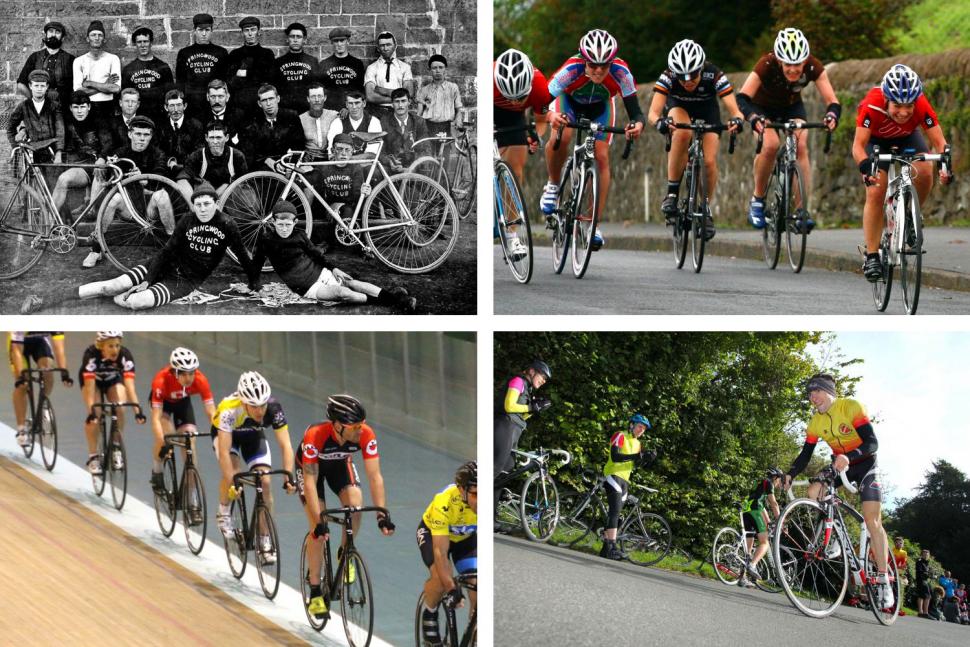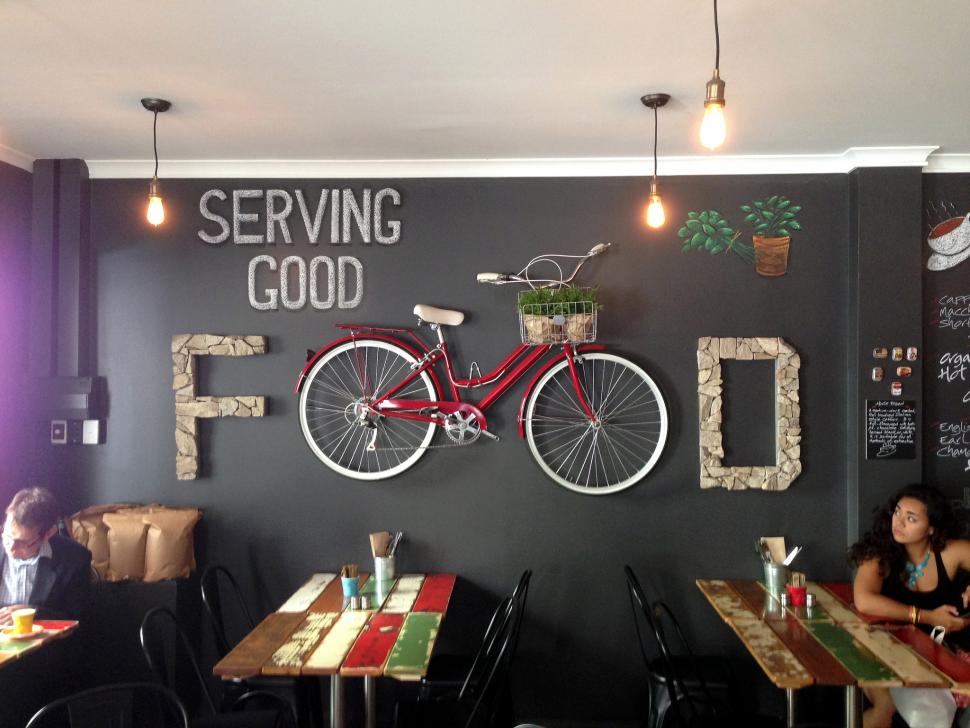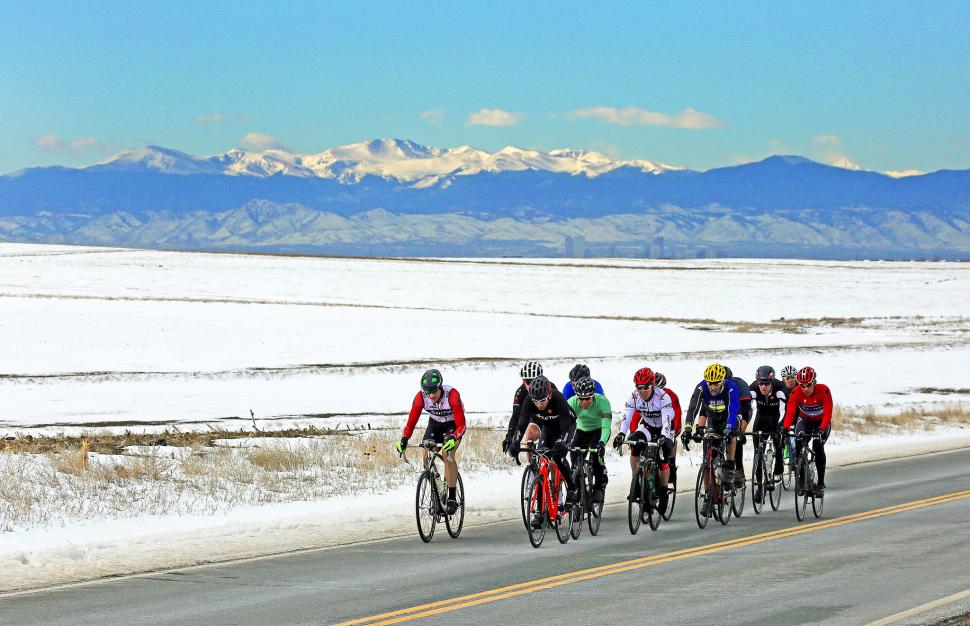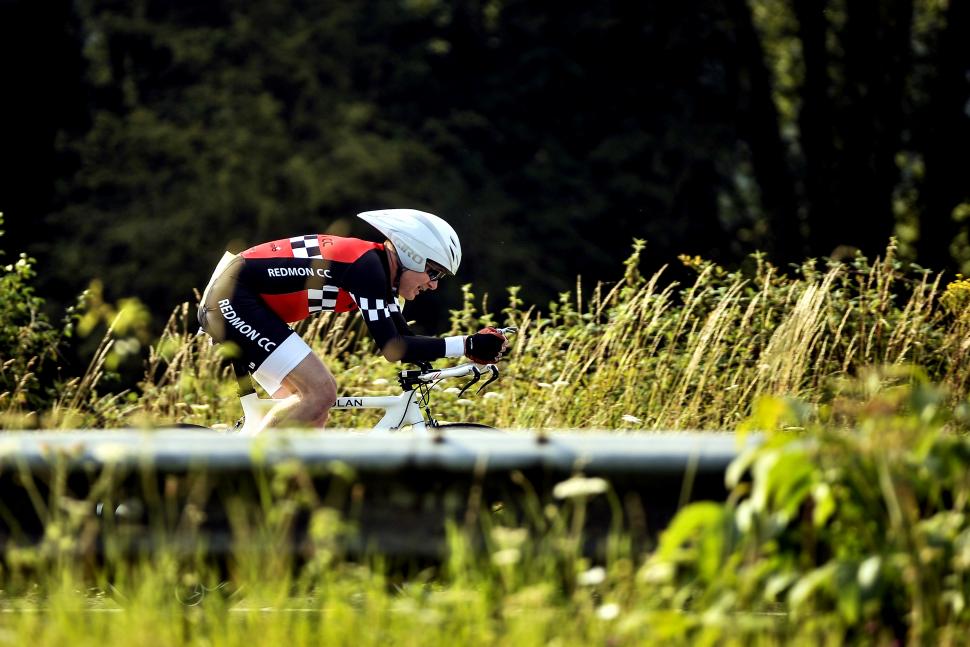- News
- Reviews
- Bikes
- Accessories
- Accessories - misc
- Computer mounts
- Bags
- Bar ends
- Bike bags & cases
- Bottle cages
- Bottles
- Cameras
- Car racks
- Child seats
- Computers
- Glasses
- GPS units
- Helmets
- Lights - front
- Lights - rear
- Lights - sets
- Locks
- Mirrors
- Mudguards
- Racks
- Pumps & CO2 inflators
- Puncture kits
- Reflectives
- Smart watches
- Stands and racks
- Trailers
- Clothing
- Components
- Bar tape & grips
- Bottom brackets
- Brake & gear cables
- Brake & STI levers
- Brake pads & spares
- Brakes
- Cassettes & freewheels
- Chains
- Chainsets & chainrings
- Derailleurs - front
- Derailleurs - rear
- Forks
- Gear levers & shifters
- Groupsets
- Handlebars & extensions
- Headsets
- Hubs
- Inner tubes
- Pedals
- Quick releases & skewers
- Saddles
- Seatposts
- Stems
- Wheels
- Tyres
- Health, fitness and nutrition
- Tools and workshop
- Miscellaneous
- Tubeless valves
- Buyers Guides
- Features
- Forum
- Recommends
- Podcast
feature
 8 reasons to join a cycling club October 2018
8 reasons to join a cycling club October 20188 reasons to join a cycling club + how to find the right one for you
Clubs are the backbone of the cycling scene and community, and an invaluable source of knowledge and advice that can help you improve as a bike rider. Here are some more reasons why you should join one, and some tips on finding the right club for your riding style.
You don't have to sign up and join a club straight away to ride with one. Most clubs will let you come on a ride or two before requiring you to join, so you can find out of you enjoy their company. Contact the club secretary to find out exactly how this works for any particular club.
When you turn up, be prepared just as you would for a solo ride, with water, food, spare tubes and tools, and follow instructions from the rider leaders.
Here’s why you should club together.
Meet like-minded riders
Clubs have personalities so finding one that matches your interests is a great way to meet like-minded riders. Some clubs are just about riding; the Sunday club ride is the focus of the club’s activities. Others are centred on racing, while your local CTC group will likely be dedicated to pootling around the most obscure lanes the ride leader can find to connect pubs and cafes.
The larger the club, the more varied its activities are likely to be. For example, Chippenham Wheelers, one of the UK’s largest clubs, has five clubruns each weekend for different fitness levels, a Wednesday evening time trial every week during the summer, audax rides, training sessions at Castle Combe circuit and lots more.
New roads and routes
Fed up of repeating the same old rides every time? There are plenty of Google Maps-based routing sites and apps that can help you find a new ride, but that can be a bit hit-and-miss — I once ended up on a byway following a route generated by CycleStreets. That was kinda fun, but the 23mm tyres I was on weren’t really suitable for trail riding.
Club ride leaders are expected to keep a ride on suitable roads, which means knowing the back lanes and quieter B roads, so a clubrun is a great way to add to your repertoire of rides and get a feel for an area.
Cafe expertise
Every good clubrun includes a cafe stop. That makes social club rides a great way to find out who does the best lemon drizzle cake among the cafes within riding range.
Racing
Sure you can join British Cycling as a private member and rock up to the start of a Cat 4 race, but if you don’t know what you’re doing you’ll almost certainly get blown out the back of the group quickly. If you do manage to hang on you’ll likely be a danger to yourself and others if you don’t know how to ride in a high-speed group.
A racing-orientated club will have coaches and training sessions that will help you get fit enough you don’t get spat off the back of every race, and build the skills to handle a bike and position yourself safely even though you’re almost touching shoulders with other riders.
Companionship
You might like riding alone, and that’s fine, but club rides give you the chance to chat while you whizz along, and they’re one of those rare social situations where you won’t be considered odd for wittering on about bikes.
Being in a group is also invaluable if things go wrong. You should have spares, tools, food and drink with you anyway, but if you suffer a significant mechanical the chances are there’ll be someone in the group to fix it.
A well-run clubrun will usually have a ‘no rider left behind’ policy. Fitter riders might get a bit frisky on hills, but they’ll wait for the group to reassemble at the top. If you’ve over-reached a bit, and the ride turns out to be further than you can manage comfortably, you’ll get help in the form of a wheel to follow or even a helping hand up hills.
This usually doesn’t apply to chaingangs, though, but the incentive of not getting dropped is a great inspiration to dig deep into your reserves.
Training
As mentioned above many clubs run training sessions. These can be a high-speed on-road ‘chain gang’; more structured sessions on an off-highway circuit; or a room full of turbo trainers at a gym or community centre.
Being able to tap into coaching expertise is a big advantage of a club, whether your aim is to get into racing, take it more seriously or just to move up from Silver to Gold standard in your favourite sportive.
Skill building
Riding with a club is a good way to learn useful road skills. It’s a bit circular, as they’re mostly the skills you need to ride in a group, such as warning of hazards and following a wheel, but anything that teaches you finer bike control is a good thing.
Discounts
Many bike shops offer discounts either to members of associated clubs or to members of the CTC or British Cycling, organisations that many club members also join. On line, Chain Reaction gives 10 percent off to British cycling members and Cotswold Outdoor has 15 percent off for CTC members.
Cycling clubs and riding groups
British Cycling lists its 1,700 affiliated clubs in its Club Finder.
Cycling UK also has a comprehensive listing of affiliated clubs and local groups
If you want something more informal than traditional cycling clubs, there are lots of cycling groups to be found on sites like MeetUp or on various social media platforms.
John has been writing about bikes and cycling for over 30 years since discovering that people were mug enough to pay him for it rather than expecting him to do an honest day's work.
He was heavily involved in the mountain bike boom of the late 1980s as a racer, team manager and race promoter, and that led to writing for Mountain Biking UK magazine shortly after its inception. He got the gig by phoning up the editor and telling him the magazine was rubbish and he could do better. Rather than telling him to get lost, MBUK editor Tym Manley called John’s bluff and the rest is history.
Since then he has worked on MTB Pro magazine and was editor of Maximum Mountain Bike and Australian Mountain Bike magazines, before switching to the web in 2000 to work for CyclingNews.com. Along with road.cc founder Tony Farrelly, John was on the launch team for BikeRadar.com and subsequently became editor in chief of Future Publishing’s group of cycling magazines and websites, including Cycling Plus, MBUK, What Mountain Bike and Procycling.
John has also written for Cyclist magazine, edited the BikeMagic website and was founding editor of TotalWomensCycling.com before handing over to someone far more representative of the site's main audience.
He joined road.cc in 2013. He lives in Cambridge where the lack of hills is more than made up for by the headwinds.
Latest Comments
- chrisonabike 3 sec ago
I'll have to find an hour or so to go through that... good work....
- Rendel Harris 14 min 42 sec ago
That is fine. Telling people who are doing something that you regard as "everybody is doing it" just because they are unthinking sheep is not, and...
- tony.westclassics@live.co.uk 25 min 21 sec ago
Theres no boubt about it, this bloke is the kiss of death
- don simon fbpe 39 min 20 sec ago
As you agree with me, I don't understand your point.
- Rendel Harris 43 min 18 sec ago
Absolutely without a doubt, a small example recently: I was cycling down The Mall in London from Buckingham Palace towards Admiralty Arch and...
- Rendel Harris 1 hour 17 min ago
The jacket looks funky but as far as I can see from the photographs isn't anything like as bright when hit by light as ProViz or similar more...
- cardch 2 hours 22 min ago
Just ordered mine. Went to visit them and it's a great setup, and so nice (I hope) to get something with a bit of soul, rather than another...
- Smac9 3 hours 3 min ago
I think the 2.5 star rating is a bit mean . I own one of these and have no issues using them. I am not a chemical engineer so cannot verify the eco...
- David9694 3 hours 27 min ago
Faussett Hill, Canterbury, reopens after car crashes into fence belonging to The Granville pub...
- Rome73 3 hours 48 min ago
No, Lime pay the councils to operate in the borough, not the other way around. They will also pay for the infrastructure - how much will depend on...






Add new comment
78 comments
@Beecho - Your sister should have a look at Penge CC - Have a look at the club rides page - http://pengecycleclub.org.uk/adults/sunday-morning-club-rides/
It's an excellent club that caters for a huge mix in abilities and has a thriving female membership (I think they were claiming about 20% of the female entries for HOTA last sunday).
Our 'club' is so awesome we don't call it a club, we're a motley crew of reprobates. We jokingly call the original member Cap'n as he does most of the organising and fair play, when anyone new joins he's always the one to sit back and improve them.
I'm the twat if there has to be one, in that I'll find the odd daft challenge to aim for, or we'll smash up the Cat and Fiddle and reconvene at the top. There's been comments about looking out for the slowest rider but you also have to keep those with a goal in mind riding at the level they want to.
There's maybe a pool of 16-20 of us, some weekends it's 2 and the best we've had is probably around 14. We occasionally do a split ride where some start early and come back to the meet point or out to coffee then some go more challenging.
Never leave a man down is a heartily followed motto. Over time we've bought riders from zero to 100 mile challenges, raised tons for charity, lent bikes and shared bunk beds. If there wasn't our 'club' I certainly wouldn't do the amount of miles solo. Great friendships formed and memories created, if you're not enjoying it then you're doing it wrong!
I take the Marxist approach to clubs.
If you happen to be in Melbourne, there are plenty of club and group rides happening everyday. Most are in the morning and there are also a few in the evening and starts within 10km from the CBD.
Morning rides are usually 60-90 minutes and will get you back in time for a quick coffee by 715-730a, with just enough time to head home or ride straight to work.
https://www.thegeekycyclist.com/tips/melbourne-bunch-rides/
In London like elsewhere the popularity of cycling is growing fast, one club that has been around a long time but has grown significantly over recent years is London Clarion Cycle Club. London Clarion Cycle club was originally founded back in 1895 and now has a very diverse membership. Rides are organised throughout the year and members have the option of 3rd party liability insurance if they haven't already got it at a very affordable price. https://www.londonclarion.org.uk/
A good article and like any sports/memberhsip club there always going to be differences of opinions, 'posses' & 'cliques' in any environment. I have cycled off & on for most of my life, but really took up serious Road Cycling about 10 years ago mostly cycling various routes solo or with a friend or two.
A year ago I joined a local Cycle Club, they offer over 4/5 different routes/lengths/speeds rides (including intro rides for newbies) every weekend, needless to say I will never be in the top Black/Orange rides! I was that young once!
However; the rest of the rides have proved to be a great way of meeting new people all of which I have to say have been very nice plus visiting a large number of excellent coffee shops, all with very nice cake! From being a Club member I have taken part in a Club organised Time Trial and Coaching sessions at a Velodrome. Two things I don't think I would have done on my own.
All in all, I have enjoyed my first year in an organised Cycling Club, I still try and ride out twice a week by myself (yes, I am retired) &/or with others when available, sometimes even on previous Club routes that I have enjoyed.
Will I renew my Club membership? Yes of course, it's fun.
"CTC also has a comprehensive listing of affiliated clubs and local groups"
JHC; it's been Cycling UK for ten years maybe? Why not call it the Bicycle Touring Club? Still the original and best, for everyone, not just racers, for all people who ride a bike.
Joined a club in its inaugural year. Was more a group of enthusiasts who went for a social ride every Wednesday during summer than a proper club. We had a beer after. No uniform code; no snobbery; personal responsibility for safety etc. The only rule was no one gets left behind. Saw some beautiful countryside and had some good conversations.
I was asked to help promote the club on social media. We went from eight members to over a hundred.
New committe members decided this season all riders have to wear helmets on all rides, including social rides. I don't wear a helmet on social rides in line with the law and Cycling UK guidelines. Never have done in 42 years of cycling. I no longer am a member. Was very sad at first, having felt compelled to leave or comply with a rule I didn't agree with. I argued helmet wearing wasn't even in the top three things we could do to make cycling safer (rider attention, not taking risks when you can't see around the corner, and understanding how to ride in a group being way more important).
I'd been an integral member of the club and put a lot of effort in establishing it. However, on reflection, I'm glad I'm out. Clubs have a tendency to drift into petty bureaucracy and some members come to define themselves by their roles and standing in the club.
Now I ride on my own or with a few friends now. Feels a lot safer and more how it was when we started out.
My problem with clubs is that there aren't any that cater for my chronotype. I'm an evening person and prefer to exercise in the afternoon or evening, or at least certainly NOT at 8am on a weekend morning before I've had a relaxed breakfast, properly hydrated and had time to have a bowel movement! (mine are usually around 11:00). Why do all clubs seem to be full of early-birds / larks? For years I've been searching for one in my area that does regular weekend rides at a civilised time but they simply do not exist. I am a member of a club but effectively use it only for evening TTs in the summer.
The difficulty I have is being 75 years of age I cant seem to find anyone who rides at my snail pace. I've been out with the 'slow' club riders but I find I was holding them back and thus ruining their enjoyment. So I go out on my own.
What advantage would joining a club be fir for me?
I'm heavily biased as both me and the better half are Penge members but all I can say is that's it a fantastic club and I've never experienced any of the negative things that other commenters have mentioned.
You seize the means of production and crush the bourgeoisie pigs?
Bit much for my average Sunday to be perfectly honest.
Likewise. I'm an owl, so early morning rides have zero appeal.
Though I guess they tend to be early so folk can do ride and also do other stuff with family and friends on weekend [which is when most rides are].
Mid week rides tends to be evenings though, daylight permitting.
Graucho not Karl
Karl or Groucho?
@Beecho: Dunno about your sister but you & your wife should come and join us (Brighton Mitre) on one of our regular weekend rides once you're settled.
So, dear South Londoners, me and the missus hope to move to Brighton this summer, leaving her sister without her usual cycling buddies. She’s the strongest of the three of us, has a beautiful bike and lives in Clapham.
Which club? Can be towards Kent as that’s where she heads to ride with us (Peckham).
1BA77D50-A6E6-47E4-8BB7-605A2207D371.jpeg
I think it's best to ride with mate's rather than a club riding the same boring route every week with moaning old farts.
I mean, you could always join a club with more than one route? We've got 12 on rotation for example.
Lived in a little village with a cycling club, quite a lot of knob heads in it that really put me off joining any club, although met a lot of club riders since then through audax and they're definitely a one off.
Moved out to somewhere were there isn't a club, but still see some of those guys and they never say morning back.
Due to back surgery 3 years ago, I've basically had to start from scratch fitness-wise on the bike this year. I've ridden just under 2000 miles since January and am gradually getting back up to speed, but it's taking a lot of time and effort and I've still got a long way to go.
I'm planning to move back to Cornwall after many years of living away in the London area. I hoped that joining a local cycling would be a good way to form new friendships with like-minded people. Unfortunately, I simply can't keep up on the club rides and feel bad for holding everyone up. This past Sunday, I was dropped within 5 miles. I've had this experience with both local clubs that I'd like to join (one of which I was last a member of 30 years ago!)
How would you guys react to someone turning up to a club ride on an e-bike? I'd just like to be able to get to the cafe stop and enjoy the banter, but I'm not sure on the etiquette and how others would react.
If you pull on the front I wouldn't mind!
I read these posts and do wonder at so many of you.
i want to learn to ride better and so want to learn from others. Also I want to ride with people who know how to ride safely in a group. I want to be able to take part in TTs and other races. None of that would be possible without being with others - none of which would be possible without clubs, it is what clubs are all about.
im in a small club and on different days we try and ride different types of ride.
Without being in a club I would not have developed any where near as well as I have. Club/group riding is so much different to solo. Don't get me wrong I do solo rides as well, but to me an essential part of riding is going fast in a group- that be definition for me is being in a club.
i have ridden in a group that was not club riders, (sportive and training camp) and it has been disastrous as people with strong legs and no idea of how to ride safely close together are dangerous.
get over yourselves, join a club, learn to be a better rider, help promote a great hobby/sport/activity
Meet like minded riders?
I think I'll pass on that one.
Same here, I'm a right arsehole, don't need any more of them in my life
Garmin Connect is a great Club to join. Saves an awful lot of hassle and politics, and delivers most of the benefits of a non-virtual club.
There are 3 clubs near me. The first one won't allow membership unless you can hold an 18mph average up hill and down dale over 60 miles and are within acceptable BMI levels, the second won't allow you to ride with them unless you drop £60 on a "team jersey" and the third (which I joined) is extremely cliquey and if your face doesn't fit they drop you at the first opportunity and never look back. I've decided I'm happier riding alone. Less politics. Although I do still argue with myself...
Who would organise the road racing and TT's if we didn't have clubs?
Saw this thread revived and was having a skim through the comments. One thing that didn’t appear here but which I’ve seen quite a lot in London at least is people setting up their own virtual clubs on MeetUp.com (which might sound like something else but isn’t!).
You can set up (almost) whatever type of group you want. I guess it works better in more populous areas where you can always find half a dozen other one-legged Bolivian orphan tandem stunt riders (I used to think I was the only one) but may be worth a look even in smaller places if you’re just after a half dozen people to join you for more mainstream stuff.
It’s not too expensive to set-up and it saves you the hassle of having to set-up your own website, find members, think about kit, AGMs, etc.
It's an obvious thing to say, but clubs are volunteer organisations, and are only as good as their members. If you avoid getting involved and don't help to shape the club culture, how do you expect things to improve?
My club also feature in one of the photos above, although we only date back to 1925. We have novice rides, a thriving junior section, coaching at all levels, a TT series, run 20 to 30 open races a year and 25% of the members are women (including our last 2 club presidents).
Don't be put off by the negative stories. Lots of clubs are very forward looking these days, so try a few out and hopefully you'll find one that suits you.
Pages